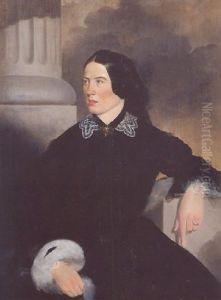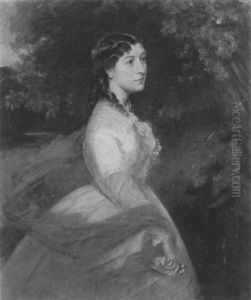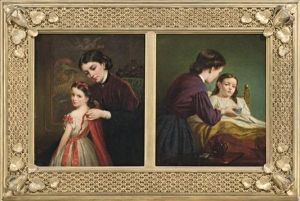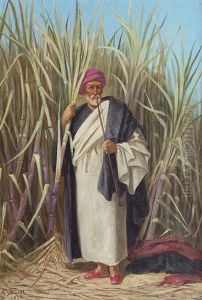Robert Dowling Paintings
Robert Dowling was a notable Australian artist, recognized for his significant contributions to colonial Australian art, especially in the genre of portrait and subject painting. Born on June 6, 1827, in Launceston, Tasmania, Dowling was the first Australian-born artist to achieve professional success both in Australia and abroad, marking a pivotal moment in the development of Australian art history.
Dowling's early life was modest, with his initial art education being self-taught, a common narrative for artists in colonial Australia due to the lack of formal art schools. However, his talent was evident early on, and by the 1850s, he had established himself as a portrait painter in Tasmania and Victoria. Seeking to further his art education, Dowling traveled to London in 1857, where he studied at the National Gallery and was influenced by the works of masters such as Holbein and Van Dyck. This period was crucial for Dowling's development as an artist, refining his technique and understanding of composition, color, and the subtleties of portraiture.
Upon his return to Australia in the early 1860s, Dowling's career flourished. He became renowned for his portraits of colonial dignitaries, settlers, and Indigenous Australians. His works from this period are significant for their historical and sociocultural value, offering insights into the faces and fashions of colonial Australia. Dowling's portraits are characterized by their detailed depiction of subjects, capturing both the physical likeness and the social standing of his sitters.
One of Dowling's most notable works is the series of paintings depicting Tasmanian Aboriginal people, commissioned by the Launceston entrepreneur and politician, John Glover. These paintings are particularly valued for their historical importance, as they provide a visual record of individuals who were among the last full-blooded Tasmanian Aboriginal people in the nineteenth century. Dowling's approach to these subjects was nuanced, blending empathy with the ethnographic curiosity of his era.
Dowling's success extended beyond Australia. In the 1860s, he returned to England, where he exhibited at prestigious venues such as the Royal Academy of Arts. His works were well received, and he maintained a successful practice in London, contributing to the international recognition of Australian art.
Robert Dowling's legacy is that of a pioneering figure in Australian art, bridging the colonial and European art worlds. His portraits not only captured the likenesses of individuals but also the essence of an era, contributing to the visual history of Australia. Dowling passed away on October 13, 1886, in London, but his works continue to be celebrated and studied for their artistic and historical significance.





















